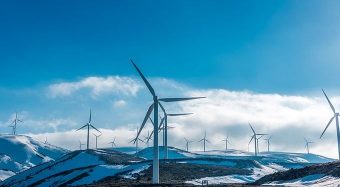
The world is entering a new energy era, where consumption of renewable energy sources seems to be the only way to conserve nature and save life on the planet.
By now, everybody knows that the supply of fossil fuels is limited and in decades to come, will be exhausted. So, if we’re planning to keep our beautiful blue and green planet and ensure that future generations have what they need to thrive, we will need to transition to alternative energy sources.
According to the International Energy Agency, in 2013 renewables accounted for almost 22 percent of global electricity generation, and the experts predict it could reach 26 percent increase by 2020.
Although some progress towards clean energy has been made, big energy consumers such as the U.S.A. and China still very much rely on fossil fuels. However, there is an increasing sense of urgency to collect energy from sunlight, wind, rain, waves, and geothermal heat.
Well, renewable energy sources aren’t always available or accessible. In fact, some renewable resources are becoming more and more scarce, such as water.
Water is becoming scarce in many regions around the world particularly in places such as Africa and parts of the United States and Australia. Unsurprisingly, the problem is more complex than the mere issue of scarcity.
The real issue is climate change, as well as industry and irrigation demands for water, which are leaving many places dry. So our countless consumption of fossil fuels which contributes to the climate changing signals danger to some parts of the clean energy industry.
As expected, many scientists predict that the water deficit is one of our most serious planetary challenges.
Implementing water saving tips in your home or workplace is a good start but what will drive even more positive outcomes is if we start to move vasts populations away from fossil fuels to renewable energy systems.
Wind energy is one such renewable energy solution. Creating electricity by using the air flows (wind) that occur naturally in the earth’s atmosphere is a sustainable way to reduce climate change and subsequently lower the deficit of water.
The wind is a renewable and inexhaustible energy source and offers many advantages. Unlike conventional electricity sources, wind power systems do not consume water and is an ideal clean energy solution.
Take the U.S. for example. Water is being removed from the ground and used for thermal power plant cooling. Which makes the power sector the biggest consumer and extractor of water compared with any other sector in America!
The amount of water power plants in the United States take in for cooling each minute is the average amount of water flowing over Niagara Falls in a minute, multiplied by three. To say that’s a lot is an understatement! However, the fraction of water consumption is relatively small compared with the power sector water withdrawals, consumption of water for generating the power is estimated to be 1 to 2 trillion gallons of water each year. Which is approximately 11 trillion bottles of water.
When you’re living an urban eco-friendly lifestyle and going about your day-to-day, it’s hard to fathom what’s happening out there. We focus heavily on ourselves and our own ‘micro’ situations, but it is important to consider the larger scale, ‘macro’ picture to get a better sense of how the cumulative sum of our decisions, choices and government and business policies affect climate change.
In 2011, in the state of Texas, the harsh drought combined with the huge demand from power plants and an increase in the population in Texas resulted in big tensions among farmers, cities and power plants.
Over in California, droughts were also affecting the agricultural industry, with many smaller farms forced to close due to lack of access to water and water wells and bores drying up. Although the Californian droughts are not nearly as hazardous as the ones in East Africa, they are certainly a huge problem that needs to be addressed.
During the severe droughts in 2014, wind energy played a significant role in alleviating the California’s record drought. Wind energy saved 2.5 billion gallons of water by displacing water consumption at the state’s thirsty fossil-fired power plants. For this reason, wind energy seems well-matched to help alleviate the effects of droughts in the USA. When it comes to wind power capacities in the US, it is important to delineate the installed from potential wind power capacities. As the map below displays, the state of Texas is by far the state with the most wind power capacity.
The amount of wind power technologically possible to have installed in a given region is presented with the wind power capacity potential. The map below clearly shows that the western part of America has greater potential wind capacities than the eastern parts.
When all is said and done, wind energy is one of the fastest-growing energy sources on the planet. According to the principal of G4 Wind, Mr. Larry Flowers, this energy source is so powerful that “the wind that blows across the Central Plains can produce more than five times the energy we are using”.
As the ongoing transition to a low-carbon economy is already taking place around the world, reducing the pressure on the environment is indispensable. Therefore, it’s important to keep in mind that by using clean and more sustainable energy sources, we can positively impact the world we live in today.
Source: ecowarriorprincess.net

